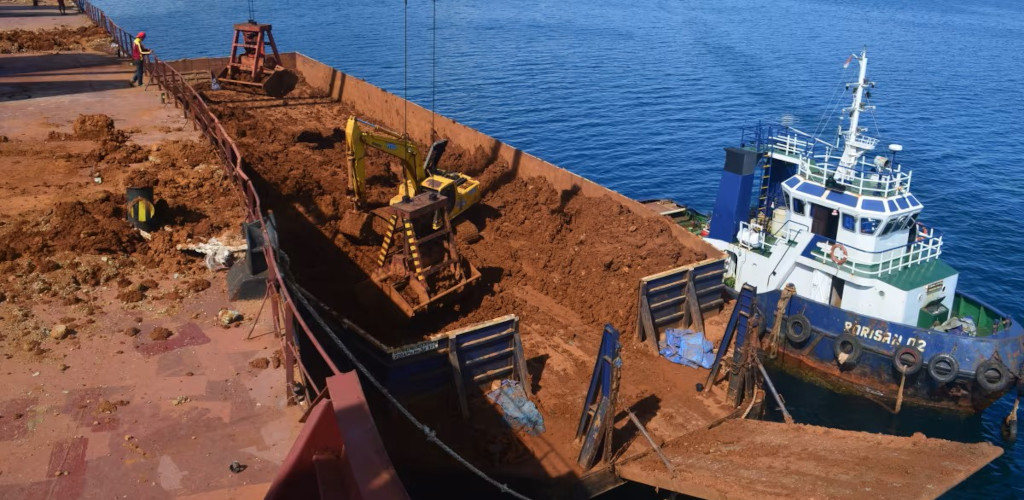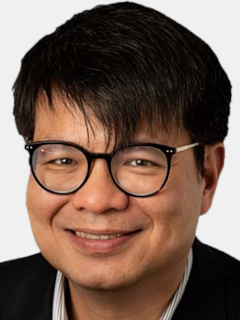Nation's Export Ban Creates Processing Hub, Disrupts Global Markets

By Iain MacIntyre
How far will Indonesia’s nickel export ban reshape global supply chains? By pushing processing onshore, the policy is triggering a surge in new smelters and major expansions, a shift that could drive a fresh wave of breakbulk and heavy-lift demand.
From Issue 6, 2025 of Breakbulk Magazine
(5-minute read)
Indonesia’s 2020 ban on raw nickel exports has triggered a foreign investment boom in domestic processing and refining, creating jobs, boosting revenue and cementing the country’s role in Asia’s electric vehicle (EV) supply chain.
With nickel most commonly used in the manufacture of mass-produced alloys like stainless steel and a critical component in rechargeable batteries such as those used by EVs, the strategy has shifted the country from its previous status as a high-volume but low-value exporter of ore to China.
Said to be currently producing about half of the world’s nickel supply at 2.2 million tonnes annually, and estimated to hold over 40% of the world’s nickel reserves at 55 million tonnes, Indonesia is increasingly viewed as a major industrial hub supporting both existing operations and new plant development in the sector.
Describing Indonesia’s export ban as a “major intervention,” Benchmark Mineral Intelligence nickel and cobalt principal analyst Jorge Uzcategui nonetheless observes the policy “didn’t come out of nowhere.”
“The country first attempted a nickel ore export ban in 2014 but relaxed it in 2017 because smelting and refining capacity was not yet ready to absorb domestic ore,” he told Breakbulk. “By 2020, however, significant nickel pig iron (NPI) and ferronickel capacity had been built, giving the government confidence to reimpose the ban permanently.
“Few resource-rich countries have attempted such a wide-ranging ban of unprocessed raw materials before. The closest parallels are Indonesia’s own earlier ban on bauxite exports in 2014.”
Projects Wave
 Uzcategui says the policy has triggered a wave of FDI in downstream projects, particularly NPI, ferronickel, nickel matte, mixed hydroxide precipitate (MHP) and, more recently, precursor material, led predominantly by Chinese firms Tsingshan, Huayou, GEM and CNGR.
Uzcategui says the policy has triggered a wave of FDI in downstream projects, particularly NPI, ferronickel, nickel matte, mixed hydroxide precipitate (MHP) and, more recently, precursor material, led predominantly by Chinese firms Tsingshan, Huayou, GEM and CNGR.
“This has created new industrial parks and tens of thousands of jobs,” said Uzcategui. “The value of Indonesia’s nickel products exports between 2010-2019 equated to US$24.1 million. However, between the beginning of 2020 until the third quarter of 2025, the value of these products has nearly quadrupled to US$93.6 million, demonstrating that the downstreaming policy to value-add domestically has fared well for Indonesia, from an economic point of view.
“Indonesia’s nickel strategy has shifted its role from ore supplier to integrated hub for stainless steel and batteries, reshaping global trade and maritime logistics in the process. The policy has been successful in catalyzing downstream development and positioning the country as the world’s dominant nickel supplier, accounting for 61% of the global refined nickel market today, compared to just 2% a decade ago.”
Institute for Energy Economics and Financial Analysis (IEEFA) finance analyst Ghee Peh concurs that Indonesia’s policy has succeeded in creating a domestic processing industry and generating significant financial value for the country.
“Nickel ore is US$60/tonne while nickel matte value is US$14,600/tonne,” he observes, noting that nickel has now overtaken coal by value as Indonesia’s main export. According to financial analysts at Macquarie Group, Indonesia’s nickel exports reached US$16.5 billion in the first half of 2025, compared to coal exports of US$14.4 billion.
“Processed nickel was 10% of Indonesian exports in 2023 and Indonesia is the largest exporter of stainless steel in the world,” said Peh. “In terms of growth, the latest estimates have placed total jobs at 230,000, of which 30,000 are Chinese workers and the rest Indonesian.”
Legal Challenge
However, Uzcategui notes that the Indonesian policy is the subject of a European Union challenge at the World Trade Organization (WTO).
“The EU launched the formal challenge in 2021, arguing that Indonesia’s policy unfairly restricted trade and distorted global stainless steel markets. Indonesia has since appealed, defending its right to industrialize domestically and citing development arguments under WTO provisions.”
Although the WTO Dispute Panel ruled against Indonesia in late 2022, its Appellate Body has reportedly been unable to function since 2019 due to the U.S. blocking the appointment of new judges and therefore leaving it unable to form a quorum. This has put the dispute into a legal void.
Notwithstanding the EU challenge, Uzcategui describes Indonesia’s strategy as a “reference point, especially for resource-rich emerging markets.”
He adds: “Some governments, the Philippines, for example, have considered resource nationalism and export restrictions, but few have gone as far as Indonesia in enforcing a hard ban coupled with such proactive downstream incentives.
“Perhaps the best recent example has been the Democratic Republic of Congo (DRC) banning the export of cobalt earlier this year. As the world’s largest supplier of cobalt, the DRC government wants to have greater control over its supply flows and global prices.
“The export ban has recently been replaced with an export quota system. Officials there have openly referenced Indonesia’s nickel policy as an example, particularly as they recognize the risk of future competition from cobalt byproducts produced in Indonesian nickel HPAL [high-pressure acid leach] plants.”
Project Cargo Opportunities
 Peh says the sector’s ongoing development in Indonesia is creating a lucrative source of bulk, project cargo and heavy-lift shipping opportunities.
Peh says the sector’s ongoing development in Indonesia is creating a lucrative source of bulk, project cargo and heavy-lift shipping opportunities.
“The Chinese battery company CATL is building a battery park in Karawang (West Java) and key stakeholders include Indonesian government mining company Antam, Chinese company Lygend and CATL. The plant is expected to cost US$5.9 billion and will have an initial capacity of 15 gigawatts (GW) when it begins operations in 2026. Capacity will increase to 40 GW after the completion of Phase 2, in 2028, enough to power up to 300,000 EVs. The plant will be sourcing nickel from East Halmahera in North Maluku.
“There is also a matching industrial plant costing US$4.7 billion which has five key facilities including two battery materials smelters, one nickel mine, a nickel-cobalt-manganese cathode factory and a battery recycling plant. This is expected to be ready by 2031. Until the plant is fully operational, the Karawang Plant will rely on materials from China.
“On Sulawesi, the Kowe Industrial Park includes battery plants and the SCM nickel mine. The first phase was completed in 2025 and the expansion of mine and production facilities continues. This is different from the Karawang battery park and the major investors are Merdeka Battery Materials from Indonesia and Tsingshan from China.
“The buildout of these battery parks will create demand for bulk shipping of material regionally from nickel mines in Indonesia and materials from China.”
Uzcategui concurs that such developments are generating “huge volumes of heavy shipments,” including autoclaves, pressure vessels, turbines, sulfuric acid plants and power station modules.
“Much of this equipment is sourced from China, particularly through EPC [engineering, procurement and construction] providers such as ENFI and China MCC, who dominate design and construction of Indonesian HPALs. While trade press coverage is limited, we see Indonesian nickel park shipments as major breakbulk moves. These flows are expected to continue as further HPALs and supporting infrastructure are rolled out.
“New opportunities for breakbulk are tied to both capacity expansion, for example, multiple HPAL projects still in the pipeline, and to infrastructure upgrades around logistics, ports and renewable energy installations that support these projects. The clustering of investments in Morowali (Sulawesi) and Weda Bay (Halmahera), the two largest nickel hubs, will continue to generate oversized cargo flows for many years.”
A Maersk spokesperson based in the Asia-Pacific region confirmed that while most of Indonesia’s processed nickel was moved via bulk carriers, the sector’s development was also creating opportunities for container shipping.
“We have seen an increase in the import of electric vehicle parts to Indonesia for the assembly of EVs [for sale domestically],” the spokesperson said.
Environmental Concerns
However, the sector’s boom is not without challenges, observes Uzcategui. “The downsides have included ESG [environmental, social and governance] concerns around the carbon intensity of NPI and ferronickel smelters, questions over the sustainability of mining practices and, from a Western perspective, the level of Chinese involvement in the Indonesian nickel sector.
“The country’s next phase will be about balancing competitiveness with sustainability if it wants to position itself in the global EV and battery supply chain space.”
Peh adds that the sector’s growth Asiahas come at “great environmental cost to the surrounding residents of Weda Bay, where local fishing and farming have been threatened” and notes that there is acknowledgement that the wealth creation from nickel results in toxic pollutants.
Furthermore, IEEFA recently published a 34-page report on the rise of greenhouse gas emissions from the sector and the buildout of captive coal plants titled Indonesia’s Nickel Companies: The Need for Renewable Energy Amid Increasing Production.
“It is very important that solar PV [photovoltaic] and other forms of renewable energy be used as much as possible in these plants and not fossil fuel," Peh said. "The transport of solar panels from China will also create demand for breakbulk transport. We hope that happens and it will be a win-win.”
Breakbulk Asia is happening on 18-19 November 2026 in Singapore.
Top photo: The nickel sector’s ongoing development in Indonesia is creating a lucrative source of bulk, project cargo and heavy-lift shipping opportunities. Credit: Benchmark Mineral Intelligence
Second: Jorge Uzcategui, Benchmark Mineral Intelligence
Third: Ghee Peh, Institute for Energy Economics and Financial Analysis
